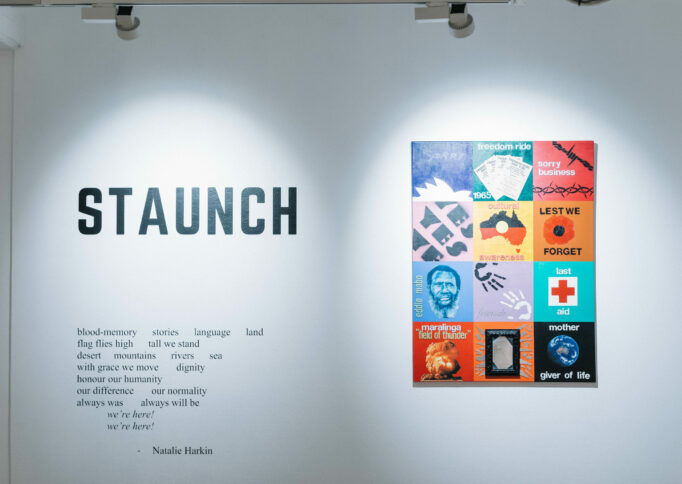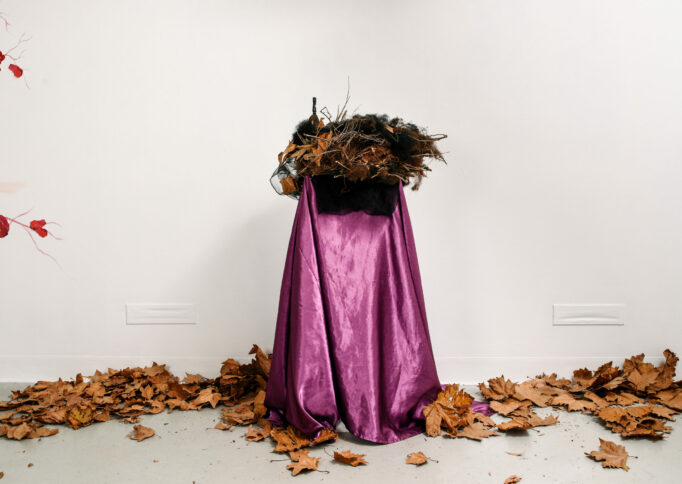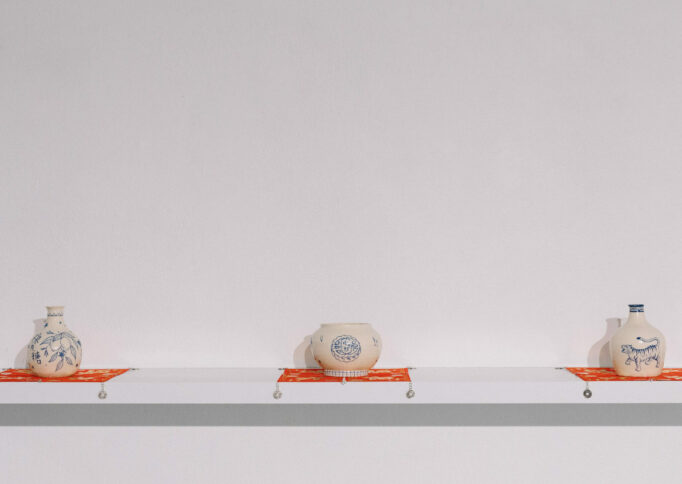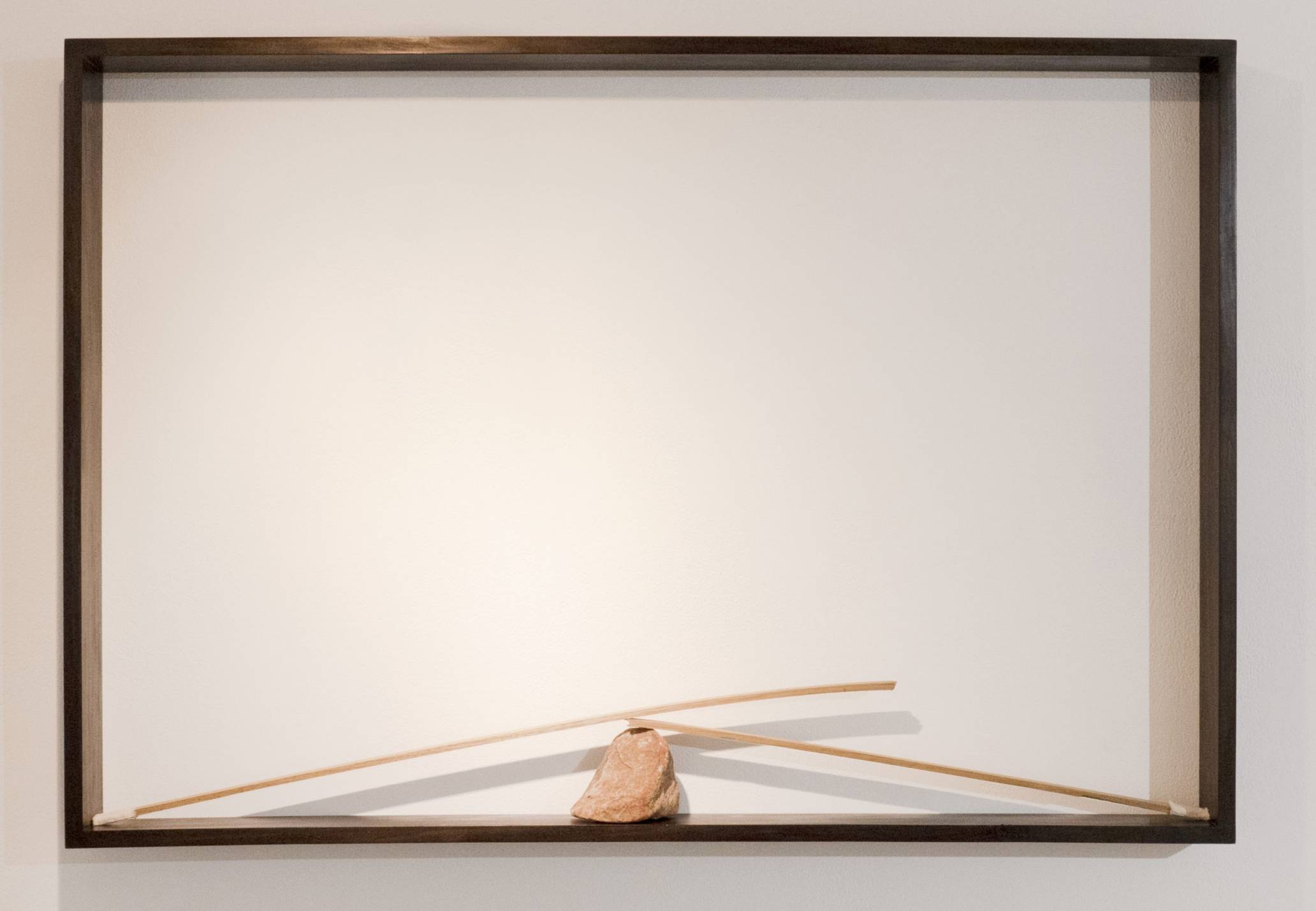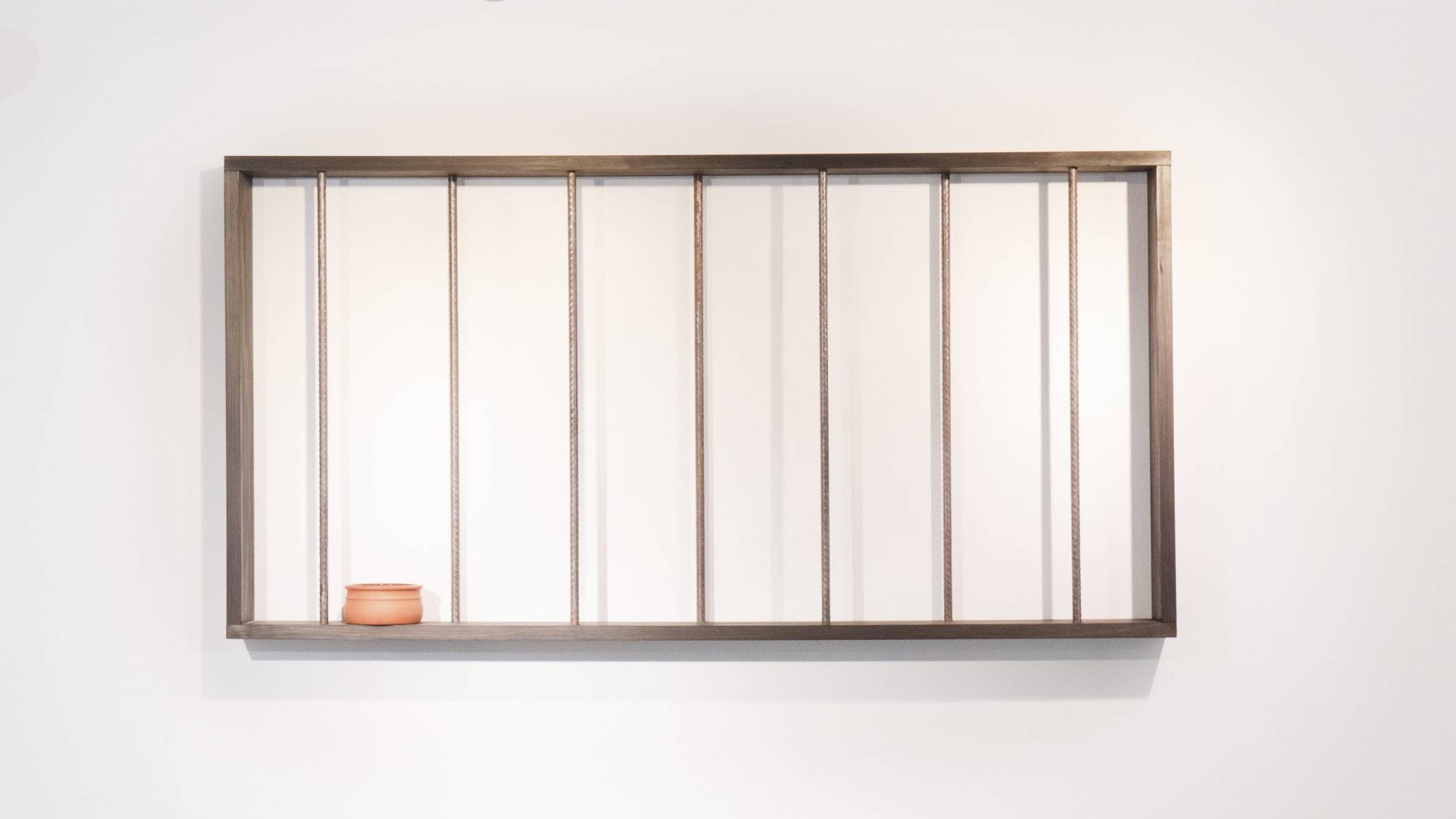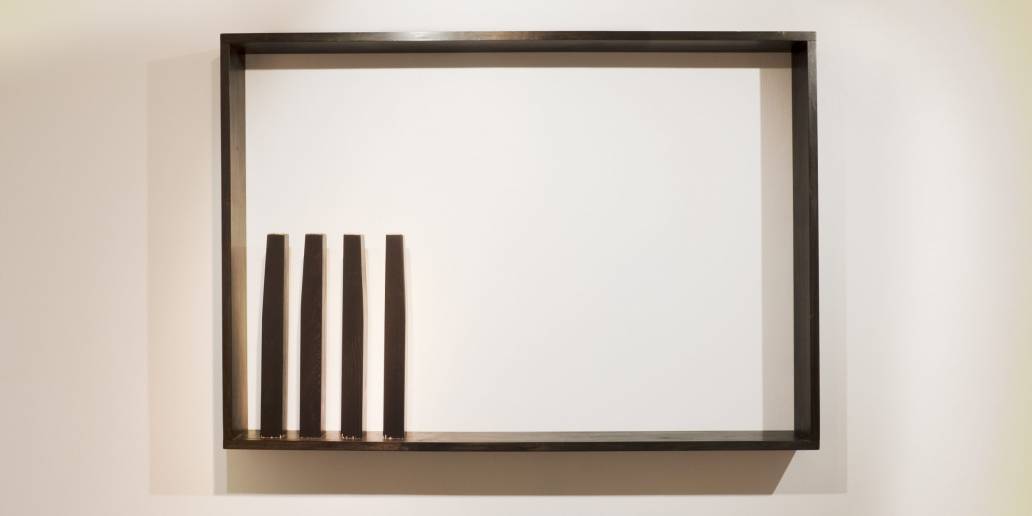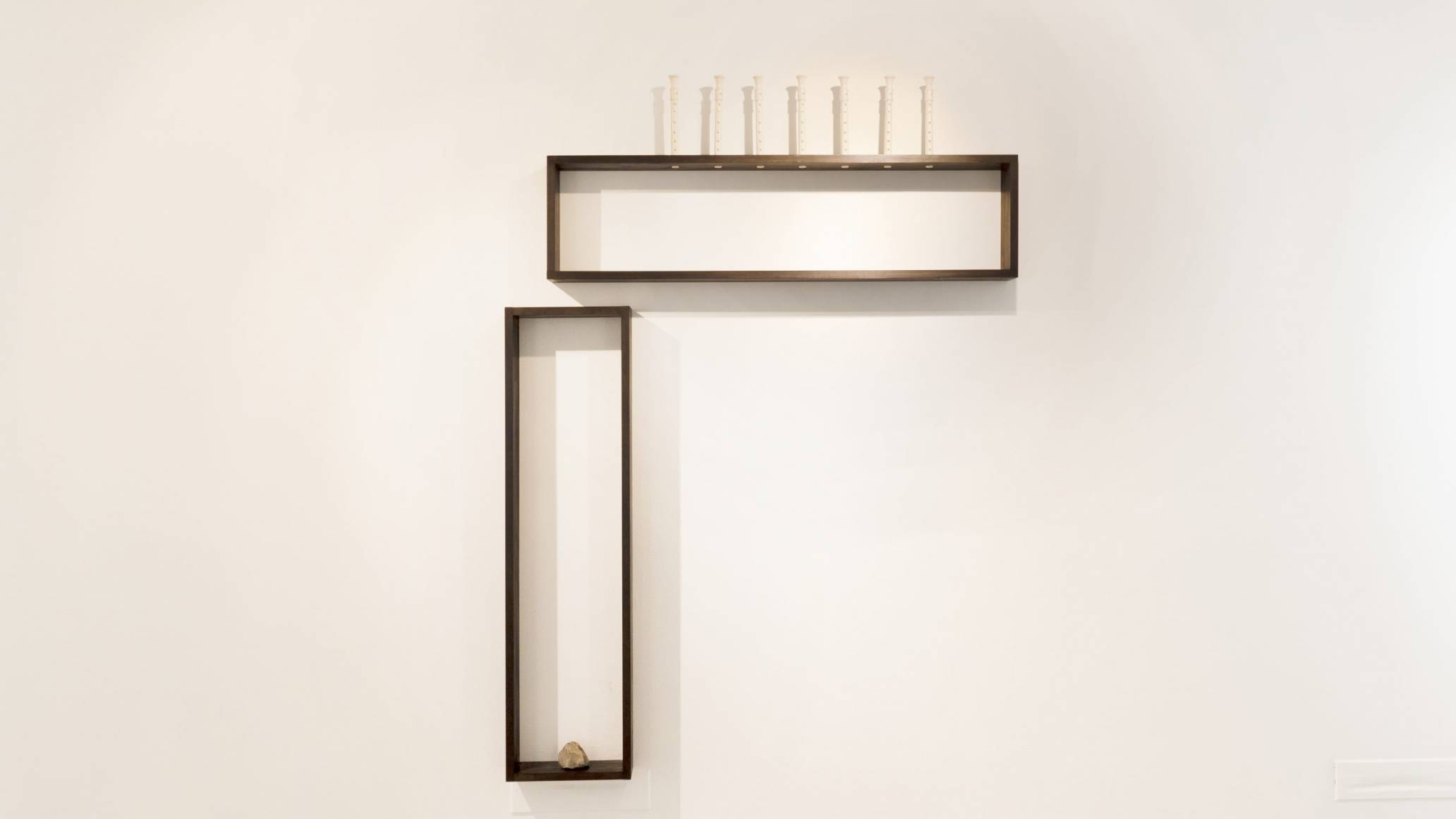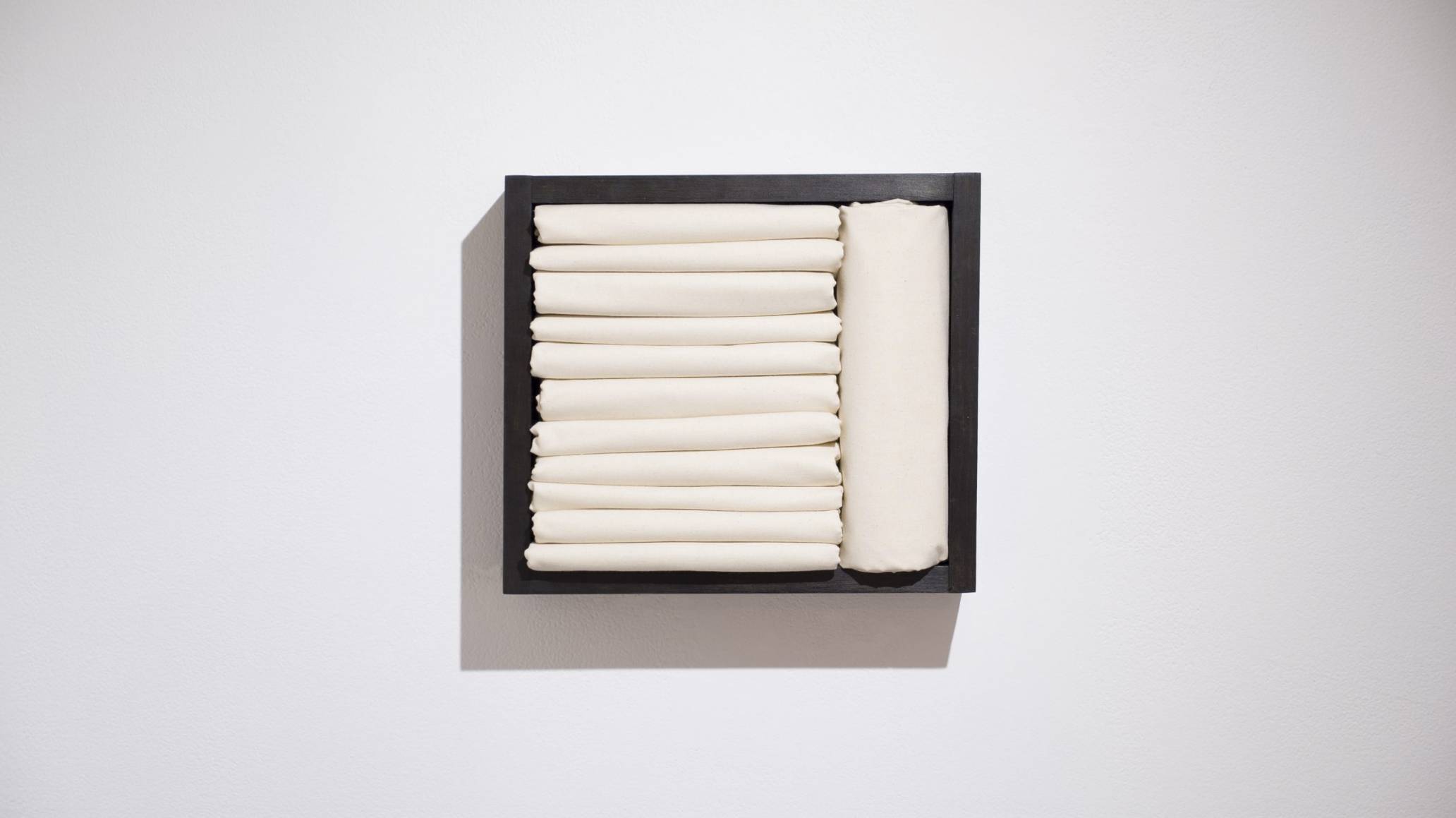Exhibition
Reciprocity
By Jonathan Kim
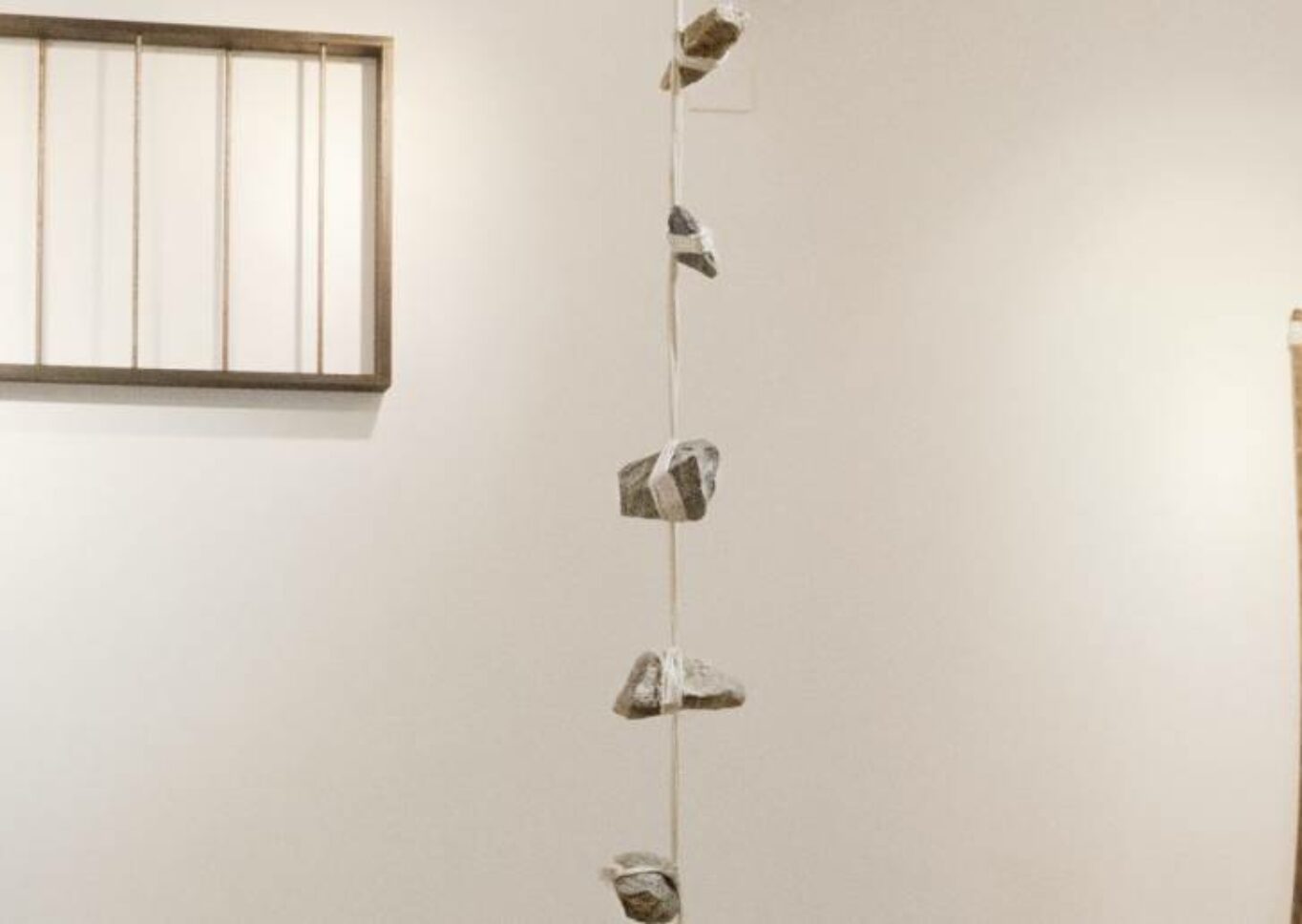
About the exhibition
My art concept was deeply inspired by Korean artist Lee Ufan’s theory of Encounter, in which the interrelation between a thing and its environmental factors is more important than its physical state in the investigation of its sameness and otherness. Lee’s theory profoundly influenced the Japanese sculptural movement Mono-ha and the Korean painting style Dansaekhwa, both of which were contemporaneous with the post-minimalist art movement of the 1970s. Although the art in accordance with Lee’s concept was formally similar to minimalism, it is significant in that it has built a unique aesthetic concept based on East Asian thought. As a result, my early research focused on the process of creating and presenting Gong-gan-seong (my theory of spatiality) for demonstrating the existence and significance of this practice. More recently, the meaning of Gong-gan-seong has been expanded and rediscovered by adopting other post-minimal concepts.
My research is currently trying to identify and distinguish the Gong-gan-seong in two respects: epistemological and structuralist. The reconstructed structures of everyday materials present various interactive relations in my practice, and the cultural elements of the work allow a differentiated approach to audiences who have a related cultural background. Therefore, the ring of epistemological approaches that I am particularly interested in at this stage is ethnic sentiment. In my recent practice, including particular cultural factors, two contrasting approaches, epistemological and structurist, are being invoked in the same work, and I have embarked on a study to identify and control them. I regard that allowing room for an epistemological approach can be one way to communicate spatiality more easily or strongly to the audience, although my practice gives more weight on the structuralist approach.
Explore the exhibition
-
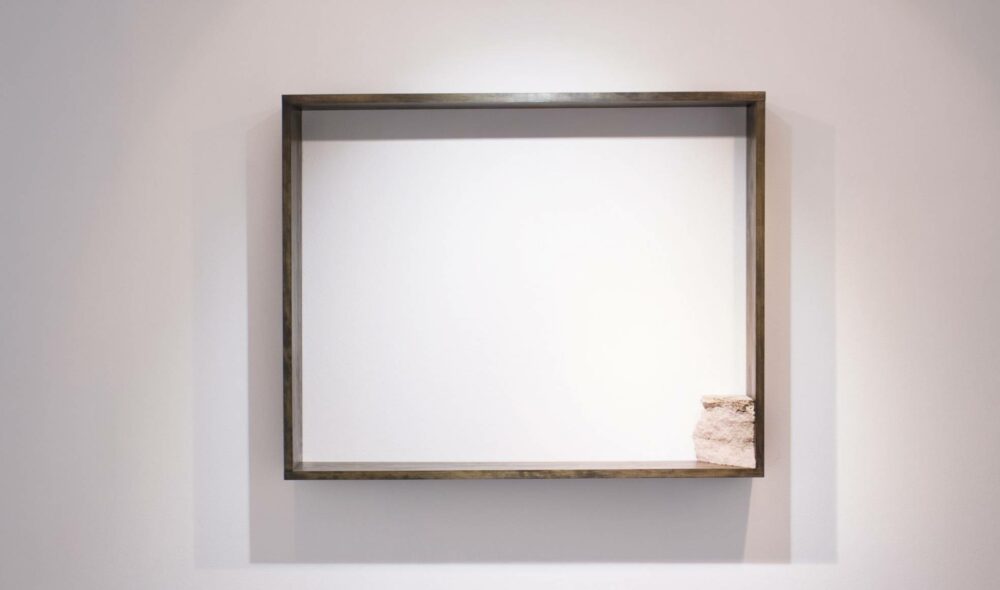
- Artwork Corner Stone in Frame
- Artist Jonathan Kim
- Year 2020
- Medium Broken stone brick from Rome, wooden frame
- Size Dimensions variable
- Price Not For Sale
-
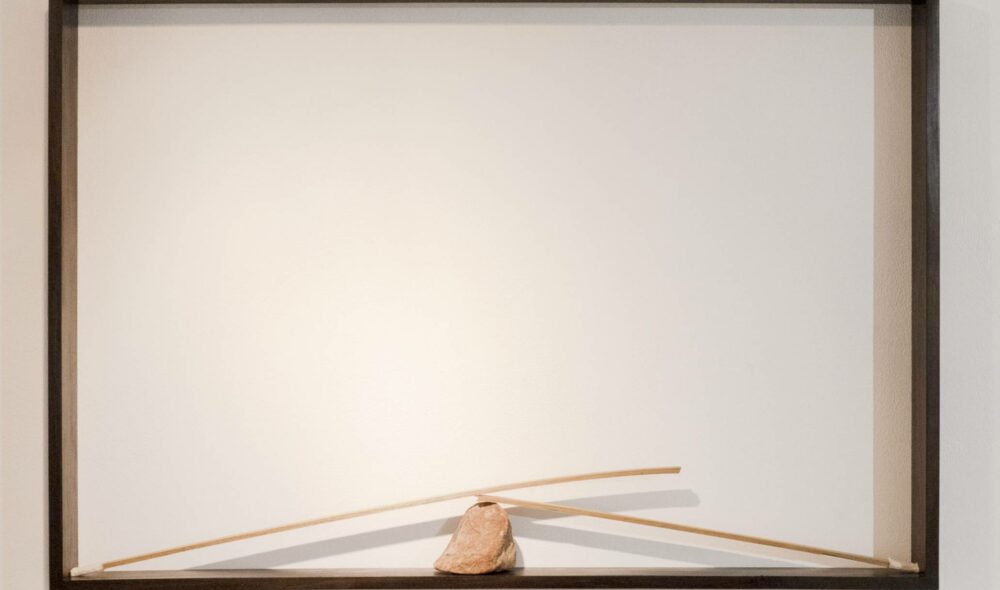
- Artwork Wood, Calico & Stone in Frame
- Artist Jonathan Kim
- Year 2020
- Medium stone, broken wooden stick, calico and wooden frame
- Size 120 x 84cm
- Price POA
-
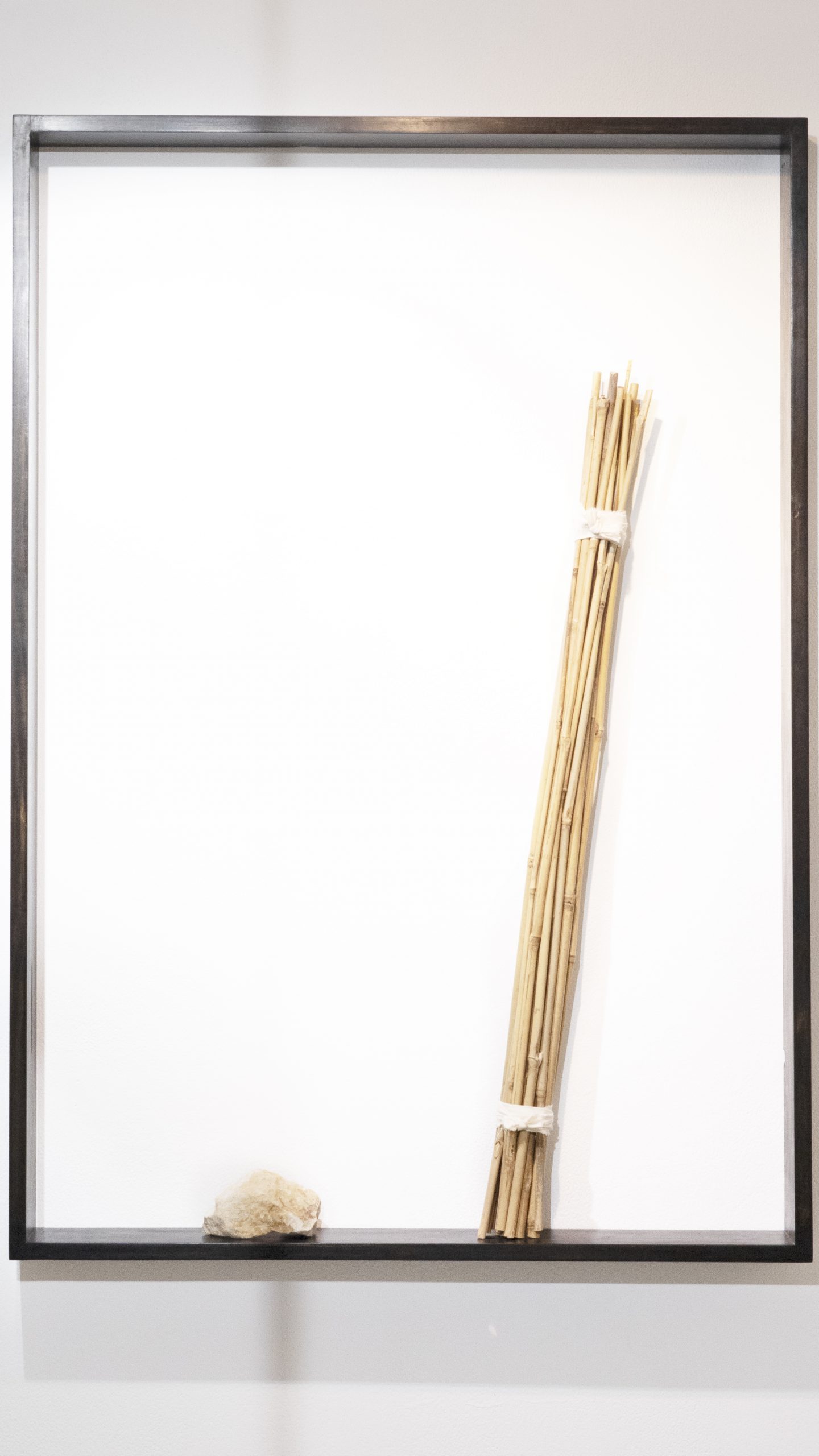
- Artwork Bamboo, Calico & Stone in Frame
- Artist Jonathan Kim
- Year 2020
- Medium stone, bamboo stick, calico and wooden frame
- Size dimensions variable
- Price POA
-
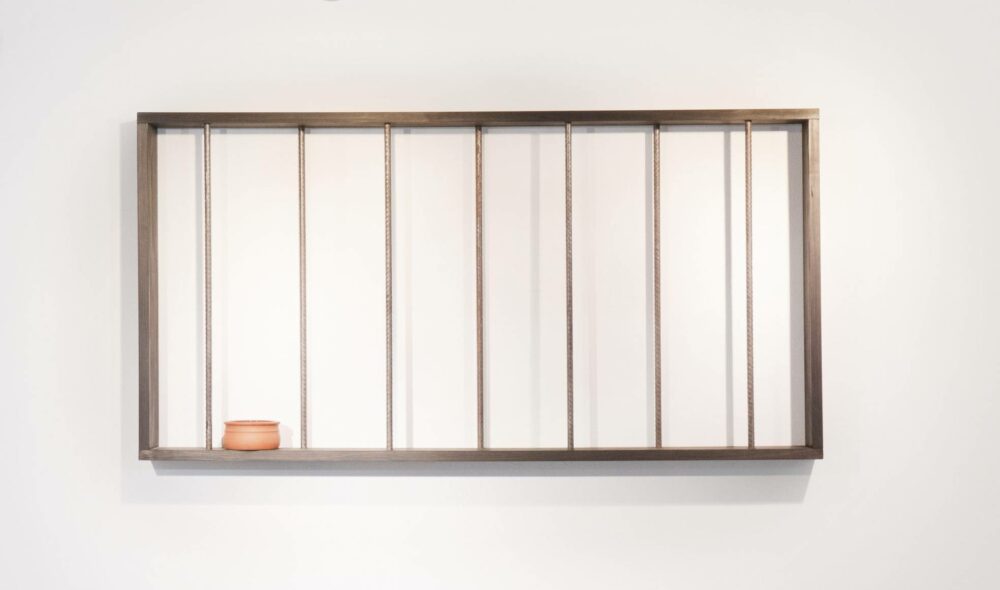
- Artwork Steel & Earthenware in Frame
- Artist Jonathan Kim
- Year 2020
- Medium steel rib bar, earthenware and wooden frame
- Size dimensions variable
- Price POA
-
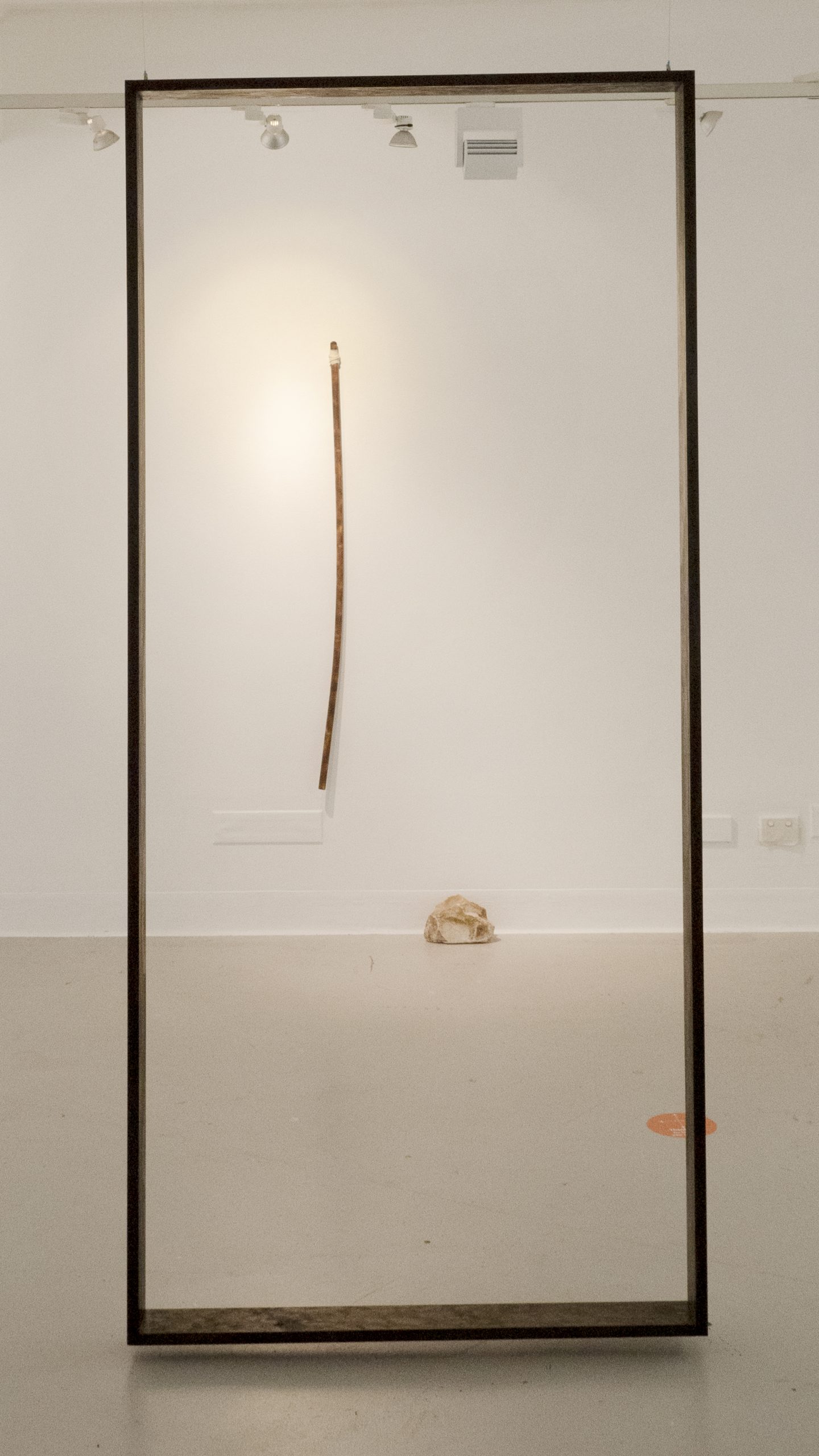
- Artwork Wood, Calico & Stone in/out of Frame
- Artist Jonathan Kim
- Year 2020
- Medium mop handle, calico, stone and wooden frame
- Size dimensions variable
- Price POA
-
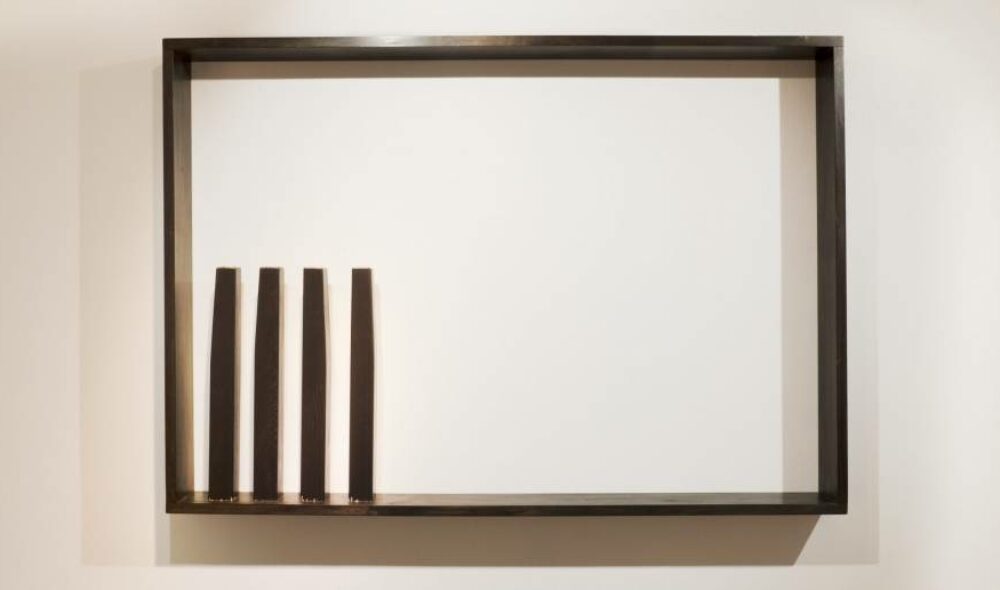
- Artwork Wood & Plastic in Frame
- Artist Jonathan Kim
- Year 2020
- Medium severed table leg and wooden frame
- Size 120 x 84cm
- Price POA
-

- Artwork Recorder & Stone in/out of Frame
- Artist Jonathan Kim
- Year 2020
- Medium recorder, stone and wooden frame
- Size dimensions variable
- Price POA
-

- Artwork Stone & Calico with Frame
- Artist Jonathan Kim
- Year 2020
- Medium stone, calico, wood, and air plant
- Size dimensions variable
- Price POA
-
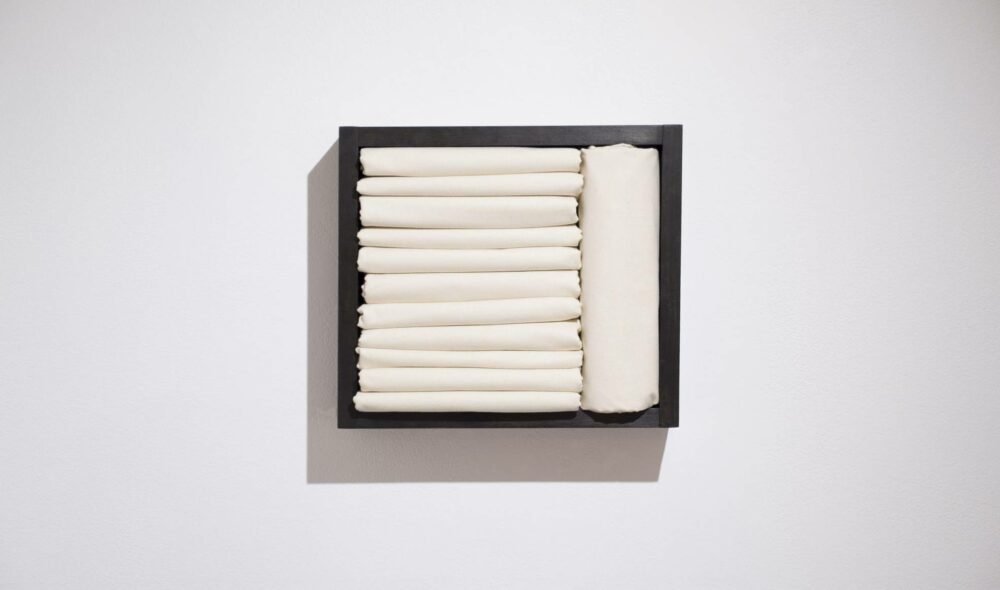
- Artwork Calico & Calico in Frame
- Artist Jonathan Kim
- Year 2020
- Medium calico and wooden frame
- Size dimensions variable
- Price POA
Catalogue essay
by Eleanor Scicchitano
Jonathan Kim is not interested in giving his audience the answers. He instead wants us to search for the answers ourselves, with our bodies, and in our own individual way.
Around the gallery, a series of black frames, each containing a vignette, a moment, interspersed with cascading rock trails and a time travelling projection. There’s a rhythm to the works arranged in the gallery. Each moment a line of poetry, a whole story being told within its borders, but also a part of a larger story. Quiet moments are broken by tension, pulsing with the ups and downs of a life. A flat stick, once fitted perfectly within the frame, has snapped under the prolonged pressure, splintered in the middle. Kim has left it where it has fallen, balanced on a rock. The edges are jagged, threatening, but also mute, broken, no longer able to fulfil its purpose. As our bodies move through this place we react to the tension stored and released in the works.
This new language is an amalgamation of ideas that Kim has researched and brought into his practice; memories of growing up in Korea, studying in China and moving to Australia. Korean artist Lee Ufan’s theory of Encounter, combined with his knowledge of the Japanese sculptural movement Mono-ha, Western theories of Phenomenology and the ethos of the Italian Arte Povera movement, discovered during a residency in Rome. In this space Kim has reused elements from previous artworks and travels. Stones repurposed from an artwork created on a residency in Italy. Table legs from his most recent work, removed, upturned and arranged at the bottom of the frame resembling a landscape, the upright sweep recalling the brushstrokes that capture the peaks in Japanese scrolls. Ideas, theories and snippets, collected over a lifetime, and combined here to create a new language, made up of Jonathan Kim. A new way to interpret our world.
In this space of slippage and interpretation, Kim creates a portal between two worlds; Korea and Australia. A direct link between his first home and his current home. Standing in Australia, we can watch a live stream from a home in Korea. In one way, we are stepping into the past, Seoul is 30 minutes behind Adelaide. But what is this assigning of time? If something happens here, it is happening at the same moment as it is in Seoul. Perhaps Kim wants us to experience the way he lives, between these two lives and cultures, separate but together.
The magic of this space is that there is no one interpretation of it. While Kim may be able to to trace his travels, for me they offer a look back. Rocks, tied together with used cotton fabric, fall from the ceiling and onto the floor. I’m reminded instantly of a skeleton, tipped out in pieces on the kitchen table, and my father telling me and my siblings to reassemble it. A pre-dinner distraction while my mother cooked and my father read. A game. Elsewhere, a bundle of dried bamboo and rock. There was a creek we played at. It was across the road from my Nanna’s house. During school holidays we would go to the creek, play in the water, cut down the bamboo and, let’s be honest, probably hit each other with it under the pretence of a game. The memory feels calmer in the frame that Kim has made. It’s like he has distilled the essence of the adventure, the rocks from the creek, the bamboo growing in its banks, and left out the yelling, the laughing, though I can hear echoes of both as I stand before the work. The materials together invoke this memory, dream, thought. Separately, they would perhaps be a rock and bamboo. I have certainly seen rocks, and bamboo, and not been taken back to that park. But between them, the conversation between rock and bamboo, that is where the creek is, the memory.
Kim wants to put his audience in conversation with their bodies, and the materials in the gallery, drawing on our own experiences to interpret the work in a physical way, training ourselves to sit amongst these stories and feel them. Not to repeat what we all already know, but we are living in uncertain times. In this space, carefully constructed and installed by Kim through both research and happy accidents, perhaps we find not what he wants to tell us, but what we are ready to hear. It may be happy, sad, tense, relaxed, or any feeling in-between, but it is us as individuals who are reflected in these walls.
Meet the artists & curators
Jonathan Kim was born and raised in South Korea and spent most of his 20s in China and 30s in Australia. Like his nomadic life, Kim’s art contains various cultural elements. Kim’s core research places a deep importance on the relationship between a medium and its environmental factors, named as Gong-gan-seong (spatiality), which has been inspired by Korean artist Lee Ufan’s philosophy of Man-nam (Encounter).
Kim was awarded the Constance Gordon-Johnson Sculpture Prize and Linden New Art Award. Kim completed the British School at Rome Residency and Sauerbier House Culture Exchange Artist in Residence and currently works at the ACE Open studio.
Eleanor is an Adelaide-based independent curator and writer. From 2013 – 2019 she was the Visual Arts Program Curator at Country Arts SA, and before that the Visual Arts Coordinator at Tandanya – National Aboriginal Cultural Institute from 2011 – 2013. She has previously held volunteer roles including co-director of FELTspace ARI. She graduated with a Masters in Curatorial and Museum Studies from the University of Adelaide in 2012, and is the current Chair of the Art History and Curatorship Alumni Network, which supports graduates with networking and professional development opportunities. She is a Board member at ACE Open and spent five weeks in Venice in 2015 working in the Australian Pavilion at the Biennale. In 2018 she received a Darling Travel Grant, which saw her travel to the UK and Italy to research community engagement strategies in contemporary art spaces.
Scicchitano’s curatorial practice commonly involves working with artists to explore identity and the body, and the way in which the body is used as a vehicle in contemporary art to challenge and explore who they are. In 2017 she presented I’m a feminist but… at Praxis Artspace, Adelaide, as part of FRAN Fest 2017. It was represented in the Walkway Gallery, Bordertown in 2018. She has previously curated exhibitions at the Contemporary Art Centre of South Australia, the Australia Experimental Art Foundation, Canberra Contemporary Art Space, FELTspace ARI and Artbank, Sydney.


